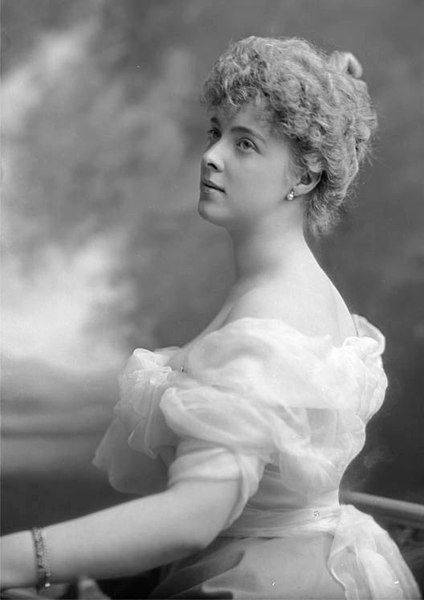 |
| Daisy, Princess of Pless |
Also known as:
born Mary Theresa Olivia Cornwallis-West
Princess Daisy.
Daughter of: Col. William Cornwallis-West & Mary Adelaide Fitzpatrick.
Wife of: Hans Heinrich XV von Hochberg (1861-1938), Prince of Pless, Graf von Hochberg & Freiherr von Furstenstein, mar 1891, div 1922.
"Hans Heinrich was supposedly 'the richest prince in Germany' with an annual income of £200,000, the equivalent of over £6 million today, as well as the castles of Fürstenstein (with over 600 rooms), Pless, a palace in Berlin and a castle in Saxony, not to mention several smaller castles and houses and a work-force of 5,000 earning income for the Prince in his Silesian coalfields." (Princess Daisy of Pless: The Happy Years)
German aristocrat, diplomat & salonniere. Maid-of-honour to Empress Maria Feodorovna. Patroness of Almack's Assembly Rooms. Also known as: Darja (her family) Daria Khristoforovna Lieven Dorothee de Benkendorf Dorothea Lieven Dorothea von Lieven, Princesse Lieven Princess von Lieven Dorothea von Benckendorff Daughter of: Christoph Ivanovich von Benckendorff (1749-1823), Military governor of Livonia & Anna Juliane von Schelling Kanstatt (1746-1797), Lady-in-waiting to Empress Maria Feodorovna, mar 1779 Wife of: Khristofor Andreyevich Lieven, Prince von Lieven (1774-1839), Livonian aristocrat, Russian general & diplomat, Ambassador to Berlin 1810, Ambassador to Great Britain 1812-1834. mar 1800.
Dorothea's physical appearance & personal qualities. "Sir Thomas Lawrence painted Dorothea in 1805 when she was twenty and rather later so did F.F. Watts RA. She had a long reddish nose, large ears, a long slender neck, a large irregular face with sharp features, grey eyes, dark curly hair, and a graceful and sinuous walk. Countess Lieven dressed superbly as money was never a problem for her; she also played the pianoforte and hard -- all of which endeared her to the Duke [Wellington]. She was ambitious, attractive, charming, totally ruthless, loved power, was a dedicated snob, loved royalty, suffered from ennui, and her political friendships were often passionate in intensity and sexuality. She admired Shakespeare's works and Walter Scott's novels." (Wellington the Beau: 165) "This woman, though hardly a beauty---'nose too strong, ears enormous, neck too long, mouth disgraceful'---nevertheless exuded an indefinable attraction. Her physical demeanor was said to be exquisite. Attired always at thge height of a fashion, she was a telented pianist, superb dancer, and scintillating conversationalist. She introduced the waltz to Britain. She had, remarked Charles Greville, 'the faculty of turning everyone to account, and eliciting something either of entertainment or information from the least important of her acquaintance.' Men stumbled over each other to pay their compliments. Her intrigues and meddling in British politics would a point in 1834 where Lord Palmerston felt obliged to insist to St. Petersburg that she and her husband be recalled. The Russian foreign office complied. Prince Lieven returned to Russia and accepted the post of governor to the tsarevich. Four years later he was dead." (Walking Since Daybreak: 20) Princess Lieven's persona. " . . . Charles Greville, that shrewd judge of human nature, wrote of Madame de Lieven, 'She is excessively clever, and when she chooses brilliantly agreeable, fastidious, conscious of her own superiority and inferiority of other people for whom she had contempt. She is dignified, graceful, accomplished, charming on the pianoforte. She endeavours to assume popular and gracious manners but this is done languidly and awkwardly. She suffers from ennui, but at the same time is so clever, imaginative and has keen penetration. She talks with extra ease and gracefulness, her letter and conversation are to the point. Because of her dignity, little bonhomie, stately and reserved manners, she is not liked and has hardly any friends.'" (Wellington the Beau: 165) "Prince Talleyrand's niece, Dorothea, Duchesse de Dino, who knew Wellington well, and Countess Lieven even better noted: 'Madame de Lieven is the woman to be most feared, respected, cultivated and courted. Her political importance which was founded on her intelligence and her experience was accompanied by an authority which no one dared question. Her house was the most exclusive in London. It is inevitable that the two embassies -- that is the two women who reigned over them [Princess Esterhazy being the second] would enter into competition with each other, and the contest was highly publicised and a favourite diversion of London society.'" (Wellington the Beau: 166) Princess Lieven's personal & family background. "Countess (she was made a Princess in 1826) Lieven was of German extraction. Her father was a general and her mother, a baroness, was a close friend of Tsar Paul I's wife. The Lievens had the embassy in Berlin from 1810-12, and came to the London embassy at the end of the year. She became and remained a leading light of English society for twenty years until her voluntary exile to Paris in 1834." (Wellington the Beau: 164) "The most renowned of all the Lievens was Dorothea, nee Benckendorff. She had married Christoph von Lieven, a son of Charlotte, in 1800. In 1812 Christoph was sent as Russian ambassador to London. The Lievens would remain in England for twenty-two years. Dorothea would hobnob with the high and mighty: King George IV, the Duke of Wellington, Earl Grey, Lords Castlereagh and Aberdeen, and the royal Dukes of Clarence, Cumberland, and York. Her paramours were legion---counts, grand dukes, foreign ministers, and prime ministers. In 1818 she took Metternich, 'the coachman of Europe,; as her lover, at the apex of his political power. The Austrian foreign minister was at the time the most celebrated man in Europe, architect of the post-Napoleon peace. Francois Guizot, who in 1847 became French prime minister, was a later conquest. 'I quite like prime ministers,' Dorothea had written to Metternich in 1820." (Walking Since Daybreak: 20) Dorothea's devotees. "She 'succeeded in inspiring a confidence' with prominent men 'until now unknown in the annals of England,' the circumspect Russian foreign minister enthused. Princess Lieven enchanted men's hearts and engaged their political thinking. Her friendships with them opened avenues of power. Dorothea's devotees included monarchs---Great Britain's George IV --- and ministers of state---Metternich, Wellington, Canning, Nesselrode, Talleyrand and Guizot. She exerted authority in the diplomatic councils of Great Britain, France, and russia. And a mesmerizing blend of passion and political machination marked her love affairs with Metternich and Guizot." (Dorothea Lieven: A Russian Princess in London and Paris, 1785-1857: 3) A diplomatic force to be reckoned with. "Sharp-eyed, sharp-tongued and a diplomatic force to be reckoned with, Princess Dorothea Lieven became another one of my favourites when researching Napoleon in America. As the wife of the Russian ambassador to Great Britain from 1812 to 1834, Dorothea had easy access to royalty, ministers, diplomats and politicians. This, combined with her considerable social skills and political acumen, gave her more influence than any other woman of the time. Her letters provide scintillating commentary on the notable persons and events of the post-Napoleonic years." (Imagining the Bounds of History) Sleeping with every major statesman on the European stage. "Exchanging, when she came to England, the world of War and Peace for Les Liaisons Dangereuses, Dorothea devoted herself tirelessly to the welfare of Russia, assiduously sleeping with every major statesman on the European stage, including Metternich, "the first statesman in Europe", George IV and each successive British prime minister bar George Canning, whom she saw as a plebeian with no manners. The fact that her roll-call of lovers was more or less identical with that of the courtesan Harriette." (Telegraph) Married young, but unfaithful to husband on many occasions. " . . . In London the Russian ambassador was Count Christopher Lieven, who was an amiable shrewd diplomat and an excellent husband. His wife was born on 17 December 1785 at Riga as Dorothea von Benckendorff. She married Lieven in 1800 when she was fifteen and was to be unfaithful to him on many occasions. Her intimacy with King George IV and with Earl Grey caused much concern. She was a close friend of two Foreign Secretaries, Lord Castlereagh and Canning; of three prime ministers, Wellington, Lord Grey and Lord Aberdeen; and of three royal dukes, Clarence, Cumberland and York. She became the mistress of Prince Metternich and ended her life in Paris as the mistress of Francois Guizot, French ambassador in London and later premier of France under Louis Philippe." (Wellington the Beau: the Life and Loves of the Duke of Wellington: 164) Her lovers were:
1) Arthur Wellesley, 1st Duke of Wellington (1769-1852)
2) Charles Grey, 2nd Earl Grey (176 4-1845) 3) Eugene d'Arnaud, Baron de Vitrolles (1774-1854) French aristocrat & politician Inspector of the Imperial Army 1812 Plenipotentiary Minister in Tuscany 1822 Pair de France 1930. "Politically nearer to the Count of Artois than to Louis XVIII, a handsome man, he is a success in the salons and is apparently seduced by Madame de Dino. From 1817 to 1829 she is his faithful correspondent. The Duchess' letters are full of severe, sometimes tender words but always friendly." (talleyrand.org)
4) Francois Guizot (1787--1874) French prime minister. Lover in 1837-1857. "Just as she had in London, Dorothea submerged herself in the beau monde and gave birth to a popular salon. In 1837 she became the mistress of François Guizot, a widowed historian and politician who served as foreign minister of France from 1840 to 1848. As a result, Prince Lieven cut off Dorothea’s allowance. Shortly thereafter Lieven made a tour of Southern Europe with the tsar-to-be, during which he was seized with a sudden illness. He died in Rome on January 10, 1839, leaving Dorothea free to pursue her romance. Though Guizot and Dorothea never lived together and never married, theirs was a genuine and lasting love match. For more about their relationship, see the François Guizot website." (Imagining the Bounds of History) "She created a salon there which became known as the listening post of Europe and began a 20-year relationship with the French statesman Francis Guizot. When Guizot was Foreign minister she facilitated private messages between him and the English foreign minister, Lord Aberdeen. 'Your letters are always welcome and never more so than when you write with a view …of preserving peace,” Aberdeen wrote. When she asked Guizot’s political opponent Adolphe Thiers why he no longer came to her salon he replied: “When you are no longer French Minister I will visit you again.'" (History of Royal Women)
Lover in 1826. " . . . On the other hand, George IV established specially intimate connections with the foreign Ambassadors, two of who, Lieven and Esterhazy, had in the early part of Canning's tenure of office the confidence of the king to a greater degree that the Foreign Secretary himself. Princess Lieven first won the heart of the King by her music, and if we are to believe the lady herself, he displayed on one occasion at least a passion for her. She was the real chief of the Russian mission. . . ." (The Letters of George IV, 1812-1830: lxxxi) "Her fascination with men in power was reciprocated. George IV was enamored of her and kept a picture of her by his bed. She became a member of the “Cottage Coterie” who hung out with The Regent at his Windsor “cottage” and conspired against the opposition party led by George Canning. She was devastated when her friend and confidant, the Foreign Minister Lord Castlereagh died, but when Canning succeeded him, Canning became her new confidant as did later Lord Grey, who became Prime Minister in 1830." (History of Royal Women)
6) George Canning (1770-1827) Prime Minister of the UK
7) Henry John Temple, 3rd Viscount Palmerston (1784-1865)
8) Karl Robert von Nesselrode, Graf von Nesselrode (1780-1862)
Lover in 1818-1826. "In 1818 Dorothea began an affair with Austrian foreign minister Clemens von Metternich. As they rarely saw each other, their romance was more a meeting of the minds than a physical ardour. She wrote him letters full of political gossip, to which he responded rather less fulsomely. . . The affair ended in 1826, when Dorothea learned that Metternich was seeing a younger, more attractive woman." (Imagining the Bounds of History) "She notoriously had a love affair with the Austrian Chancellor Metternich. They met in 1818 where they struck up a conversation about Napoleon. Metternich later said of their meeting : “This proves he (Napoleon) has been more useful to me on his rock in the ocean than ever he was on the throne.” Their correspondence survives – he wrote mainly about his love and she of politics. Five years later the relationship was dying as was the Russian-Austrian alliance. Metternich’s marriage to his second wife ended it." (History of Royal Women)
10) Konstantin Pavlovich of Russia (1779-1831) "Contrary to common expectation Dorothea Lieven's erstwhile lover, Grand Duke Constantine, did not succeed Alexander. And an insurrection instantly welcomed their younger brother to the throne. . . ." (Dorothea Lieven: A Russian Princess in London and Paris, 1785-1857: 100)
11) Pyotr Petrovich Dolgorukov (1777-1806) Russian aristocrat, diplomat & general. 10) Theobald-Emile Arcambal. (1800-1870) Baron Piscatory. |
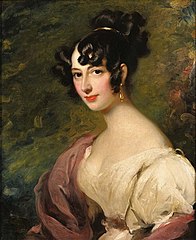
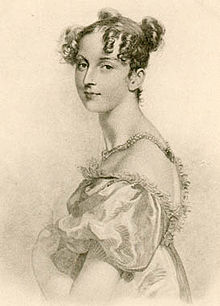




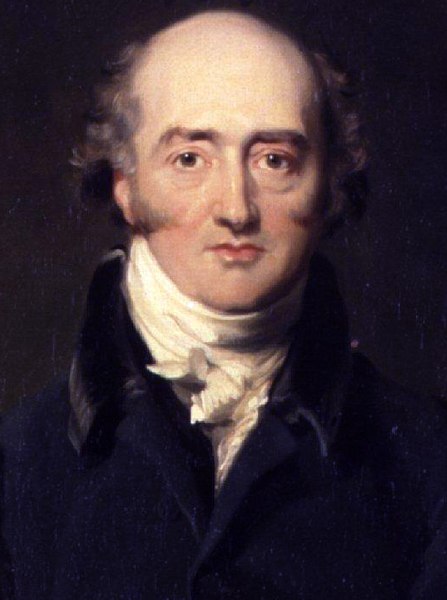
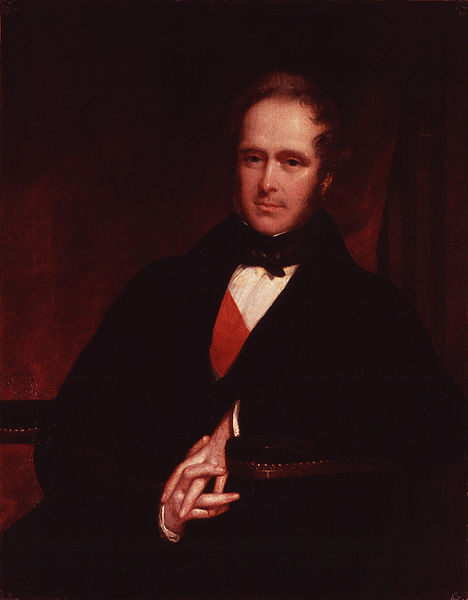




No comments:
Post a Comment